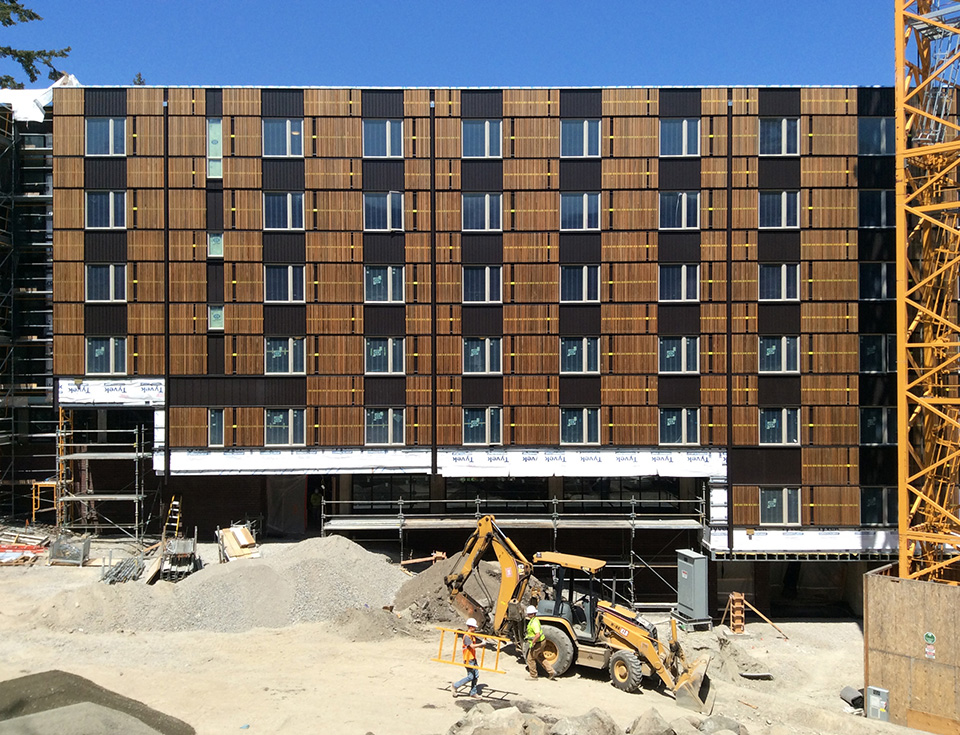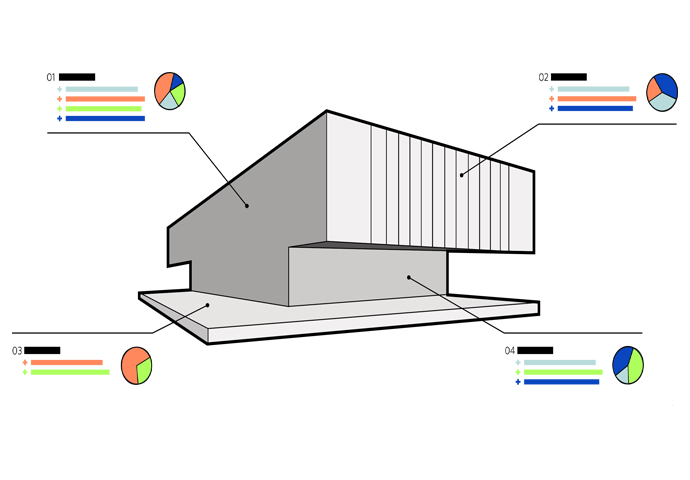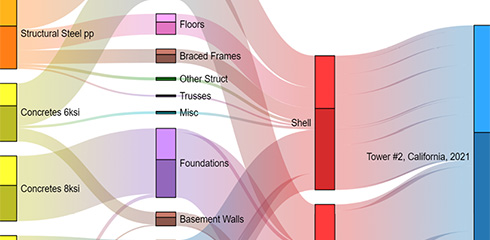Climate Call to Action: Decarbonize the Building Industry
KieranTimberlake used Tally to reduce embodied carbon on a project at the University of Washington by more than 5 million kilograms of CO2, which is equivalent to the impact of 17 years of lighting power for the project.
KieranTimberlake is committed to reducing carbon footprints both in our own projects and across the architecture industry. We help our clients understand and reduce their buildings' total greenhouse gas contributions, including contributions from both operational carbon emissions and embodied carbon.
Understanding embodied carbon—the emissions associated with materials and construction processes throughout the whole life cycle of a building—requires Life Cycle Assessment, a practice that until recently has been new and confounding for most building professionals. KieranTimberlake has been a forerunner in the movement to quantify embodied carbon early in the design process when adjustments can be made to reduce embodied carbon in a building. In 2013, KieranTimberlake's affiliate company KT Innovations released Tally, a Revit plugin that makes LCA practices accessible to building professionals.
In using Tally on our own projects and promoting it publicly for over six years, we have gained both technical knowledge and awareness about socializing the topic of embodied carbon with our peers in the industry. Recently, principal Stephanie Carlisle has authored or appeared in several articles that urge architects and other members of the design community to take a hard look at the environmental impacts of the building industry—and come together to make collective change. This is not something we can afford to delay, Carlisle argues; it must happen within the next decade to avoid disastrous consequences.
We Have 10 Years to Radically Decarbonize the Building Industry
Fast Company
In this long-form report on the state of the industry, Carlisle tasks designers with matching their personal politics regarding climate change to their professional actions. She details the process by which KieranTimberlake has made reducing embodied carbon a fundamental part of our practice.
So, what is the role of the designer in tackling carbon emissions? The goal is not to transform architectural design into an act of analysis. The real work now is to figure out how to make carbon assessments part of ethical and inspired design practice. The practice of architecture is already overburdened with modeling and simulation, with litigation, and with cost-cutting. However, I would urge every designer to consider that by failing to connect your concern over climate change to the impact of your day-to-day work, you are already expressing your values. You're already saying that this is an issue that you don't really care about at all. Climate change cannot simply be an issue we talk about only when it is convenient.
Empowering Architects to Take on Carbon
The Architectural League of New York
Sarah Wesseler of the Architectural League interviewed Carlisle regarding a toolkit of decarbonization strategies that practitioners can use to reduce their environmental impact, including Tally, a Life Cycle Assessment app developed by KieranTimberlake affiliate KT Innovations. Carlisle argues that carbon literacy needs to be taught in design school, and that climate concerns should be treated just like public health and safety during the design process.
Each office needs to figure out the right way to integrate low-carbon design into its design culture, because it's not a one-size-fits-all solution. Firms need to demonstrate that leadership to their staff, and the designers who are the most excited about taking this topic on need to feel supported in doing this work.
We need to believe that this isn't a trend or a marketing strategy. Climate change, along with equity, is the defining challenge of our generation.
How to Respond to Doubts and Pushback to High-Performance Design
Architect Magazine
Architect interviewed design professionals from three firms across the country on making change in the industry. In this Q&A, Carlisle offers practical tips for designers to increase their carbon literacy—and encourages them to think of addressing embodied carbon as a fundamental part of good design.
If we are going to make progress on reducing the climate impacts of the building sector, we can't wait for special clients or projects. We need to find opportunities to reduce the embodied carbon of every project. As architecture firms increase their own carbon literacy and become more confident with low-carbon strategies, they will be in a far better position to do the slow work of raising awareness and influencing clients. We already do this for topics that we feel are essential, like accessibility or health and safety. Keep in mind, design professionals make many decisions for which we don't ask permission and for which we feel obligated to confidently express our opinions. For example, we don't rely solely on our clients' opinions about code, aesthetics, or user experience.





